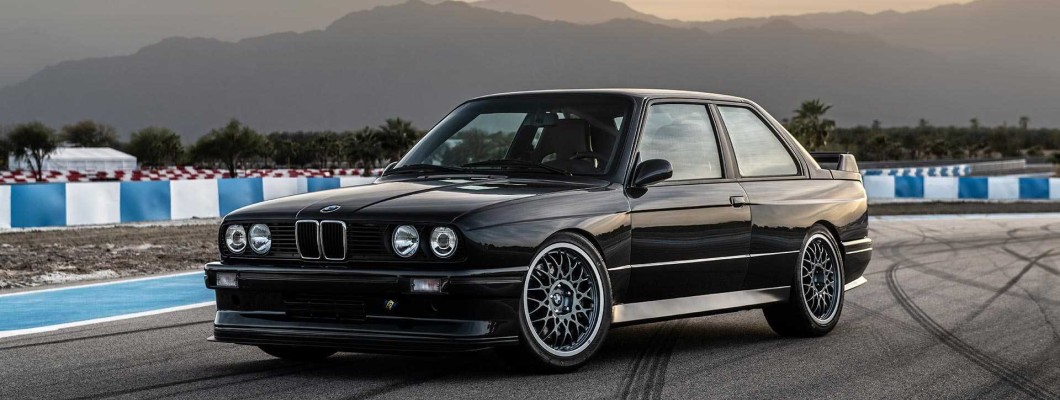
From its humble beginnings
as an aircraft engine manufacturer to its current position as a global leader
in luxury automobiles and motorcycles, the BMW history is a fascinating story
of innovation, perseverance, and passion. For over a century, this iconic brand
has captivated the hearts and minds of automotive enthusiasts worldwide. But
how did BMW evolve from producing aircraft engines to crafting some of the
world’s most sought-after vehicles? Let’s embark on a thrilling journey through
the storied past of Bayerische Motoren Werke AG, or as we know it today, BMW.
Short Summary
- BMW was founded in 1916
as an aircraft engine manufacturer and grew to become a renowned luxury
and performance automotive powerhouse.
- The BMW logo is iconic,
symbolizing the company’s roots in Bavarian state colours.
- Over its history, BMW
has achieved success through motorsport racing achievements, electric
vehicle production innovations, strategic acquisitions of MINI & Rolls
Royce brands and philanthropy for social responsibility.
The Birth of BMW
When the name BMW is
mentioned, one often thinks of the sleek and powerful cars that grace our
roads. However, the brand’s origins can be traced back to 1916, when its focus
was on producing aircraft engines. The company was born from the merger of the
Flugmaschinenfabrik Gustav Otto and Bayerische Flugzeug-Werke AG. This union
marked the beginning of BMW’s journey from a small aircraft engine manufacturer
to a global automotive powerhouse, renowned for both exceptional motorcycles
and automobiles.
Today, BMW is a symbol of
luxury and performance, with a range of vehicles that cater to luxury and
performance.
Aircraft Engines
BMW’s journey began with the
production of aircraft engines during World War I, after which the company
faced restrictions and was forced to pivot its focus to other mechanical
products. This period in BMW’s history proved to be pivotal, as the company
began producing motorcycle engines and eventually BMW combustion engines.
The first completely
BMW-conceived aircraft engine was the BMW IIIa, which paved the way for the
legendary BMW R 32 motorcycle in 1923. This diversification laid the foundation
for the future success of the BMW brand.
Merger and Formation
The formation of BMW,
officially known as Bayerische Motoren Werke AG, was a result of the merger
between Flugmaschinenfabrik Gustav Otto and Bayerische Flugzeug-Werke AG in
1916. The newly formed company continued to focus on aircraft engine
production, building a solid reputation for quality and innovation.
In 1922, the BMW name
resurfaced when Knorr-Bremse main shareholder Camillo Castiglioni acquired the
BMW name and transferred it to BFW. This marked the beginning of the BMW we
know today, a brand that would go on to produce some of the most iconic
vehicles in automotive history.
The Evolution of the BMW Logo
The BMW logo is instantly
recognizable and has become synonymous with the brand’s values of excellence,
innovation, and performance. First unveiled in 1917, the logo’s design is
inspired by the Bavarian state colours and the company’s initials. Over the
years, the logo has undergone minor updates, with the most recent version
introduced in 2020.
Despite these changes, the
core design elements and symbolism of the BMW logo have remained consistent,
solidifying its iconic status in the automotive world.
Origins and Symbolism
The circular BMW logo
consists of two quarters in blue and white, representing the Bavarian state
colours. The design is believed to be inspired by the Rapp logo from 1913, with
the blue and white quarters symbolizing the Bavaria region.
This simple yet powerful
design has become an enduring symbol for the BMW brand, reflecting its strong
connection to its roots and its commitment to excellence in engineering.
Logo Updates
Although the BMW logo has
maintained its core design elements, it has undergone minor updates to keep it
fresh and contemporary. The most recent update, introduced in 2020, features a
transparent, flat design that replaces the preceding black ring.
This new logo is based on
the classic BMW Motorsport logo and reflects the company’s ongoing commitment
to innovation and evolution in the automotive industry.
Two Wheels to Four: BMW Motorcycles and Cars
BMW has a rich history in
both motorcycle and automobile production. The company began producing
motorcycles in 1923 with the introduction of the BMW R 32, a legendary bike
known for its groundbreaking boxer engine design. This was the first BMW
motorcycle produced, setting the stage for a long line of innovative and
high-performance bikes.
BMW’s entry into the
automobile market came in 1928, following the acquisition of Fahrzeugfabrik
Eisenach, which allowed the company to expand its product line and begin
producing its own car designs.
BMW Motorcycles
The R 32 was BMW’s first
motorcycle, and its innovative design set the stage for the company’s success
in the motorcycle industry. The bike featured a unique boxer engine
configuration, with cylinders arranged transversely with respect to the
direction of motion. This design allowed for easy servicing and set a new
standard for quality in the motorcycle world.
Throughout the years, BMW
has continued to innovate and expand its motorcycle lineup, consistently
pushing the boundaries of design and performance. From the post-war R 24
motorcycle to the modern lineup of high-performance BMW Motorrad models, the
company’s commitment to excellence in motorcycle engineering remains
unwavering.
Entering the Automobile Market
BMW’s entry into the
automobile market was marked by the acquisition of Fahrzeugfabrik Eisenach in
1928. This acquisition allowed the company to begin producing its own car
designs, starting with the BMW 3/15 PS DA2 as their first BMW-branded vehicle.
Over the years, BMW has
continued to create innovative and high-quality BMW cars that have earned the
brand a reputation for excellence in the automotive industry.
BMW During Wartime
BMW played a significant
role during both World Wars, primarily as an aircraft engine manufacturer. In
World War I, the company produced aircraft engines for the German military.
During the Second World War, BMW became an armament firm, producing engines for
Nazi fighter planes and providing motorcycle parts for the war effort. The
company also used forced labor and prisoners in concentration camps to meet
production targets.
Despite these dark chapters
in its history, BMW has emerged as a global leader in the automotive industry,
committed to innovation and sustainable practices.
World War I
During World War I, BMW
produced aircraft engines for the German military, playing a crucial role in
the country’s wartime efforts. At this time, the company was still primarily
focused on aircraft engine production and had not yet entered the motorcycle or
automobile markets.
The end of the war brought
about significant changes for BMW, as they shifted their focus to other
mechanical products and laid the groundwork for their future success in the
automotive industry.
World War II
In World War II, BMW:
- Became an armament
firm, producing engines for Nazi fighter planes such as the Focke Wulf
FW190
- Supplied motorcycle
parts for the war effort
- Utilized forced labor
and prisoners in concentration camps to meet production targets
The end of the war marked a
turning point for BMW, as the company worked to rebuild its brand and focus on
innovation in the automotive industry.
Post-War Resurgence
After World War II, BMW
faced significant challenges as its factories were heavily damaged and
remaining facilities were prohibited from manufacturing motor vehicles or
aircraft. Despite these obstacles, the company was determined to reestablish
its standing in the automotive industry and solidify its reputation as a
premier brand.
BMW released the R 24
motorcycle and the 501 car, and resumed production in multiple locations,
setting the stage for a new era of growth and success.
Rebuilding the Brand
To reestablish its brand
after World War II, BMW resumed production in various locations and introduced
new models such as the R 24 motorcycle and the 501 car. These vehicles marked a
new beginning for the company, which had faced significant challenges during
the war.
The successful launch of
these models and the resumption of production in multiple BMW plants signaled a
strong commitment to the future of BMW and its dedication to innovation and
excellence in the automotive industry.
Expanding the Product Line
As BMW continued to rebuild
its brand after the war, the company expanded its product line with models such
as the 1500, 3 Series, and M3. These new additions to the BMW lineup showcased
the company’s dedication to innovation and performance, helping to reestablish
its reputation as a leading car manufacturer.
This expansion and focus on
quality products allowed BMW to regain its position in the automotive industry
and set the stage for future success.
BMW Racing and Motorsport Success
BMW has a storied history in
motorsports, both on the track and in the development of high-performance road
models. Their success in various racing events, such as Formula One, Le Mans,
and Rally Racing, has helped to solidify the brand’s reputation for performance
and excellence.
BMW’s commitment to
motorsports is further demonstrated through its subsidiary, BMW Motorsport
GmbH, which is responsible for the production of high-performance versions of
various BMW models.
Racing Achievements
Throughout its history, BMW
has achieved success in a variety of racing events, including:
- Formula One
- Le Mans
- Rally Racing The
company has also attained numerous accomplishments in the Deutsche
Tourenwagen Masters (DTM) series and the British Touring Car Championship
(BTCC), with six consecutive victories.
These achievements showcase
BMW’s dedication to performance and excellence in both racing and the
production of high-quality vehicles.
High-Performance Road Models
BMW’s commitment to
motorsports extends beyond the racetrack and into the development of
high-performance road models, such as the iconic M3. These vehicles are crafted
with the same dedication to performance and excellence that has made BMW a
household name in the world of motorsports.
From the track to the open
road, BMW continues to push the boundaries of what is possible in automotive
design and engineering.
Innovations and Future Concepts
BMW has consistently focused
on innovation and future concepts throughout its history, as demonstrated by
the establishment of BMW Technik GmbH and a commitment to electric vehicles and
sustainability. As the automotive industry continues to evolve, BMW remains at
the forefront of new technologies and ideas, ensuring that the brand remains
synonymous with performance, excellence, and cutting-edge design.
The company has invested
heavily in research and development, and its commitment to innovation has
resulted in the company’s success.
BMW Technik GmbH
Established in 1985, BMW
Technik GmbH was created as a think-tank division to develop ideas and concepts
for future BMW models. This specialized research and development subsidiary has
produced a variety of groundbreaking technologies, including the iDrive
infotainment system, the Active Cruise Control system, and the ConnectedDrive
system.
BMW Technik GmbH has played
a critical role in the success of the BMW Group, providing creative solutions
for various aspects of individual mobility.
Electric Vehicles and Sustainability
BMW entered the electric
vehicle market with the launch of the i3, marking the beginning of the
company’s commitment to sustainability and environmentally friendly
transportation solutions. Today, BMW offers a range of electric models
including:
- i4
- i7
- iX
- iX1
- iX3
This showcases the brand’s
dedication to reducing emissions and developing sustainable technologies for
the future.
As the automotive landscape
continues to change, BMW remains at the forefront of innovation and
environmental responsibility.
Acquisitions and Expansion: The BMW Group
Over the years, BMW has
grown through acquisitions and expansion, adding brands such as MINI and
Rolls-Royce to the BMW Group. These strategic moves have allowed the company to
diversify its product offerings and solidify its position as a global leader in
the luxury automotive market.
By continuing to invest in
new technologies and brands, BMW has ensured its ongoing success and growth in
an ever-changing industry.
MINI and Rolls-Royce
BMW acquired the Rover Group
in 1994. This group included popular brands such as:
- Land Rover
- Rover
- MG
- Triumph
- MINI
The company decided to
retain only the MINI brand, focusing on revamping the iconic small car for the
modern market.
In 1998, BMW acquired Rolls-Royce,
further expanding its portfolio to include luxury vehicles such as Rolls Royce
motor cars that cater to a discerning clientele. These acquisitions have
allowed BMW to grow and strengthen its position in the premium car segment.
Focusing on the Premium Car Segment
In 2000, BMW restructured
its strategy to prioritize the premium car segment. This shift entailed the
introduction of new models, such as the BMW 7 Series, and the expansion of the
product range to include luxury SUVs and coupes.
This focus on the premium
car segment has resulted in increased sales and profits, as well as an enhanced
brand image for BMW. The company’s commitment to excellence in the luxury
automotive market has helped it become one of the world’s leading luxury car
manufacturers.
BMW's Global Impact and Philanthropy
Beyond its success in the
automotive industry, BMW has made a global impact through its philanthropic
endeavors and sponsorships, including the Herbert Quandt Foundation and various
partnerships. By supporting global leaders working towards a peaceful, just,
and sustainable future, BMW demonstrates its commitment to social
responsibility and the betterment of the world in which we live.
The Herbert Quandt Foundation
Established in 1970, the
Herbert Quandt Foundation, also known as the BMW Foundation Herbert Quandt, is
an independent corporate foundation that promotes responsible leadership and
advocates for a more peaceful, just, and sustainable future. The foundation
supports global leaders in their efforts to create positive change through:
- Grants
- Scholarships
- Fellowships
- Organization of
conferences and workshops
This commitment to
philanthropy reflects BMW’s dedication to making a lasting impact on the world.
Sponsorships and Partnerships
In addition to its
philanthropic endeavors, BMW has entered into numerous sponsorships and
partnerships in the arts and sports. The company sponsors events such as the
BMW Art Journey and the BMW Painting Award, supporting emerging artists from
around the world.
In the realm of sports, BMW
has sponsored various events, including the DP World Tour and the BMW
International Open. These sponsorships and partnerships demonstrate BMW’s
commitment to supporting the arts, sports, and global culture.
Summary
The history of BMW is a
testament to the power of innovation, perseverance, and passion. From its
origins as an aircraft engine manufacturer to its current position as a global
leader in luxury automobiles and motorcycles, the company has continually
pushed the boundaries of what is possible in automotive design and engineering.
As BMW continues to evolve and adapt to the ever-changing landscape of the
automotive industry, one thing remains constant: the brand’s unwavering commitment
to excellence, performance, and sustainability. Here’s to another century of
driving innovation and inspiring generations of automotive enthusiasts.
Frequently Asked Questions
What is BMW origin and history?
BMW’s official founding date
is March 1916 and its first product was an aircraft engine called the BMW Illa.
It was created from the Munich firm Rapp-Motorenwerke, was incorporated into
Knorr-Bremse AG in 1920, and then refounded as BMW AG in 1922.
Since 1917, its world-famous
emblem has been present on all BMW products.
What does BMW stand for English?
BMW stands for ‘Bayerische
Motoren Werke’, or ‘Bavarian Motor Works’ in English.
This automotive company is
based in Munich, Germany.
Was BMW originally British?
No, BMW was not originally
British. It originated in 1913 as Rapp Motorenwerke, an aircraft engine
manufacturer, in Bavaria, Germany, and assumed the name Bayerische Motoren
Werke in July 1917.
It began producing
motorcycles in the 1920s and entered the automobile business in 1928.
What is the short summary of BMW?
BMW is the world’s leading
manufacturer of premium automobiles and motorcycles, boasting over 30
production and assembly facilities worldwide.
They also provide a range of
premium financial and mobility services.
Premium
Components
BMW car bumpers epitomise a
seamless fusion of elegance and utility. Meticulously crafted with the brand's
signature attention to detail, these bumpers not only contribute to the
vehicle's aesthetic appeal but also play a pivotal role in ensuring safety and
performance. Designed to withstand impacts and collisions, BMW bumpers are
engineered with advanced materials and innovative technology that absorb and
distribute energy effectively, minimizing potential damage. Whether integrated
with the car's design in a streamlined manner or featuring distinctive
contours, BMW bumpers are a testament to the brand's commitment to both style
and functionality. They encapsulate the essence of precision engineering and
luxury, embodying BMW's legacy of producing vehicles where aesthetics and
practicality harmoniously coexist. Now and again, you may require BMW
replacement bumpers. That’s when you call us, here at Premium Components
What was BMW's initial product?
BMW’s initial product was an
aircraft engine called the BMW IIIa.






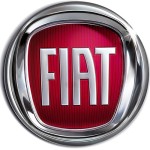
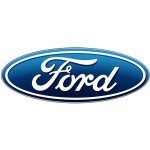





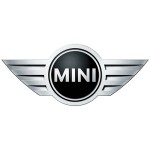

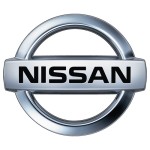
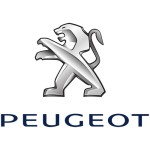
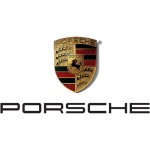
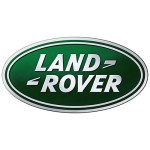


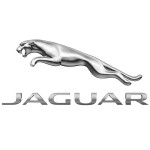






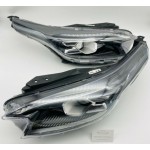
Leave a Comment